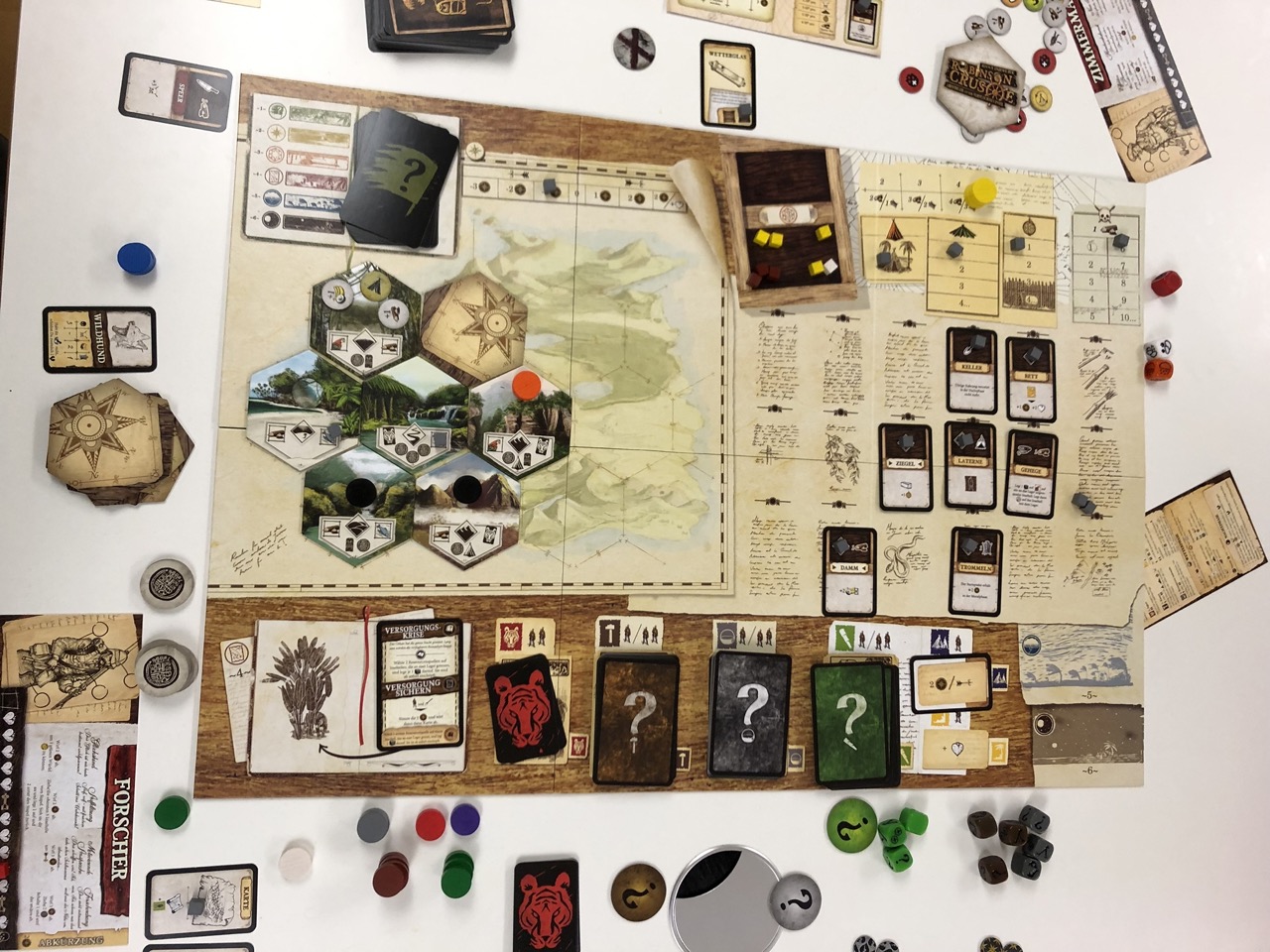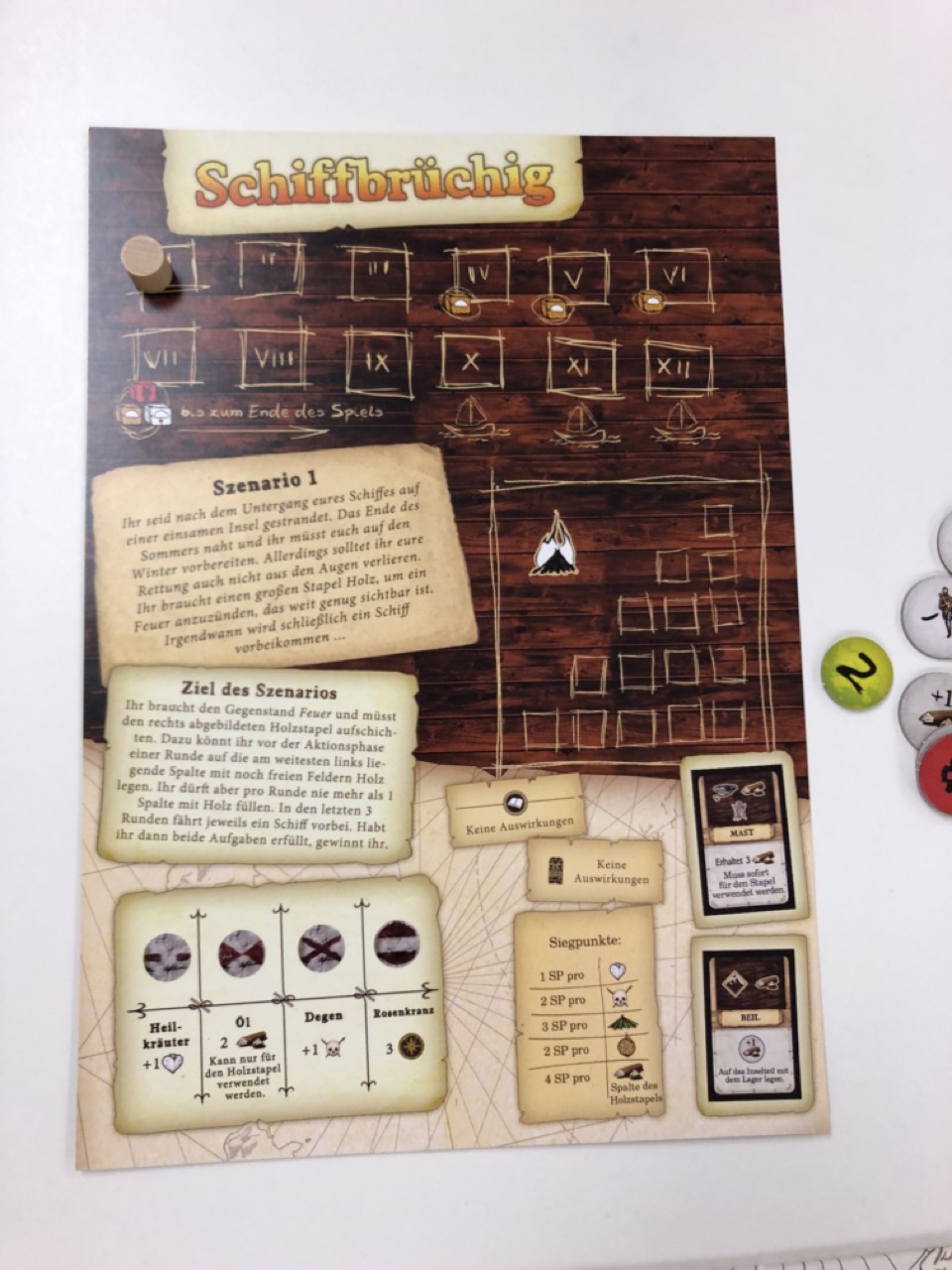Robinson Crusoe: Adventures on the Cursed Island
My friends and I recently played a round of Robinson Crusoe: Adventures on the Cursed Island.
This is a cooperative game. Up to four players each play one character, and the group loses as soon as one of the characters dies. Unfortunately, the game makes it very easy for that to happen. But let’s see.

The image above shows the board, after we’d been playing for a while. The island has been explored to a degree. The different types of terrain yield different kinds of resources (food, wood, game, etc.). To the right of the map, the cards represent tools we can build. The cards at the bottom of the board represent animals we can hunt, and different (usually bad) events that can happen when we build, harvest, or explore. The cards on the top left are events (also usually bad) that occur every round. To the top right of the map, there’s our supply (food, certain materials), and to the right of that, some fields representing the state of our shelter and fighting strength.
We played one of the supposedly easier scenarios, where we have to light a pyre to attract ships for our rescue. This involves piling up wood and developing the ability to light and control fire.

The scenario takes 12 rounds. During the first few, things are fine, but then the weather sets in during rounds 4-6, and it gets worse starting in round 7. The job, now, is to build a shelter (lest the weather affect our health), collect food (lest we starve), and fend off all kinds of inconvenience (lest our morale drop, which has amplifying negative effects on just about everything else).
You get the idea: the game doesn’t make it easy to win. I’ve mentioned morale: this is a really important resource. As long as morale is high, all kinds of special abilities of the characters are usable. The trouble is, a single night spent famishing can make morale drop considerably, and then everything gets very complicated. Special abilities get lost, the effects of hunger and wounds amplify, and a downward spiral sets in.
Needless to say, we lost. Our quick retrospective analysis led to the insight that we had invested too much in the mission goal (by piling up wood) too early, instead of first creating a foundation that allowed us to sustain our sheer existence (by ensuring stable food supply and a roof above the head to shield us from the weather).
This game is hard, very hard. One could be tempted to believe it’s intentionally biased towards being impossible to win. I don’t believe that’s the case: it’s just a game that makes one think really hard about what to do next and how to use the available resources wisely. Every step can be the final one.
I recommend this game for people with a lot of frustration tolerance (or the strong will to build some). In that case, it’s a really engaging game with lots of interesting challenges and lessons to learn. If you want to just have a good time, consider slashing some monsters in another game, and stay away from this one: it’s really serious.
Tags: games